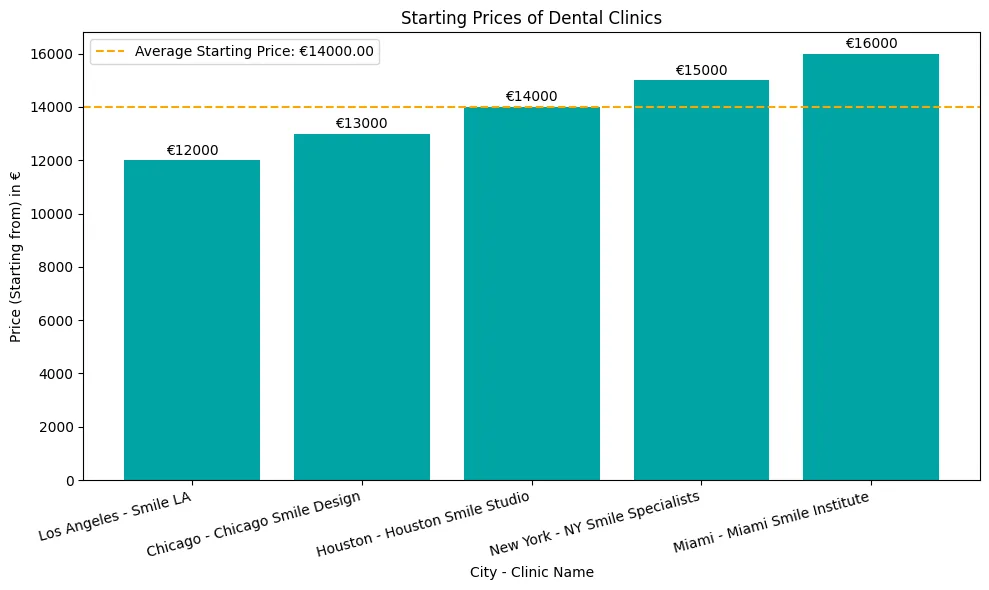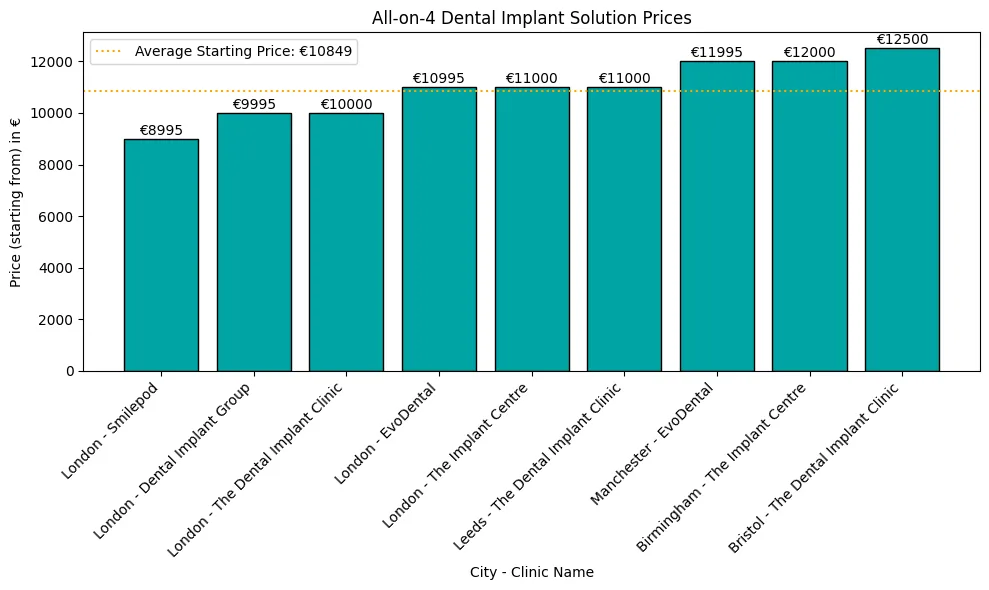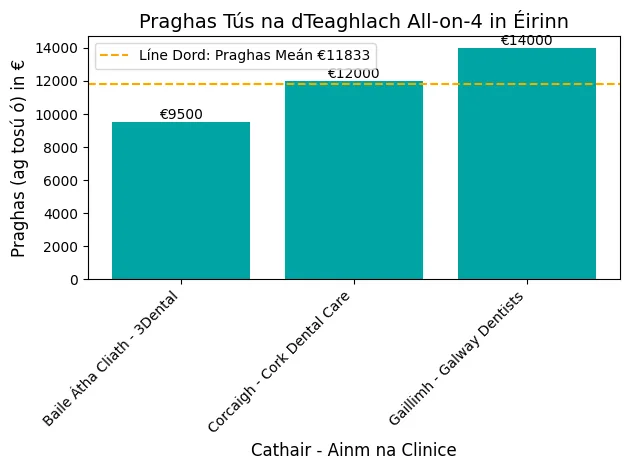Duke menduar për të marrë implantet dentare por të shqetësuar për koston dhe rreziqet?
Me kaq shumë opsione atje, është e rëndësishme të peshoni të mirat dhe të këqijat.
Cilat janë të mirat dhe të këqijat e implanteve dentare?
Përparësitë e implanteve dentare janë:
• Duken dhe funksionojnë si dhëmbë natyralë
• Zgjidhje afatgjatë
• Parandalimi i humbjes së kockave
• Ruajtja e strukturës së fytyrës
Disavantazhet e implanteve dentare janë:
- Kërkojnë vizita të shumta
- Mund të jetë më e kushtueshme
- Procedura kirurgjikale me rreziqe të mundshme
- Jo i përshtatshëm për të gjithë
- Rezultati varet nga aftësia e dentistit
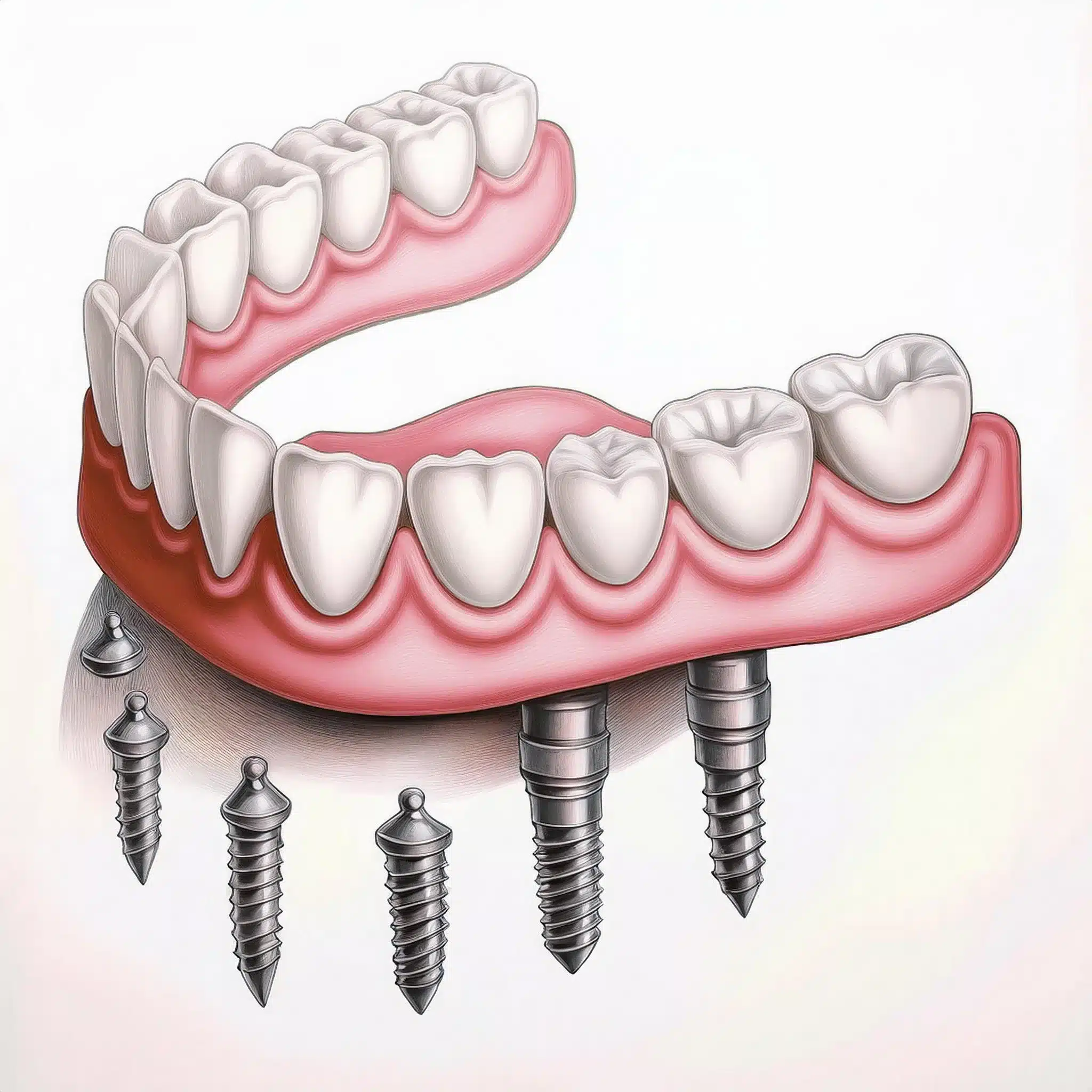
Avantazhet e implanteve dentare
Implantet dentare janë një zgjidhje afatgjatë për dhëmbët që mungojnë, me një shkallë mbijetese 95,5% pas 10 vjetësh (1).
Stomatologjia e implantit ofron avantazhe të rëndësishme, si rikthimi i funksionalitetit dhe parandalimi i humbjes së kockave.
Kjo është arsyeja pse ata janë një opsion popullor për njerëzit që duan të zëvendësojnë dhëmbët që mungojnë.
Përfitimet afatgjata
Implantet dentare mund të zgjasin për shumë vite; disa studime tregojnë deri në 97.2% pas 10 vjetësh (3).
Ata imitojnë nga afër estetikën dhe funksionalitetin e një dhëmbi natyral, duke i bërë ato një zgjidhje me kosto efektive në planin afatgjatë, pasi zvogëlojnë nevojën për punë dentare në të ardhmen.
Pamje dhe ndjesi natyrale
Implantet dentare të dhëmbëve natyralë janë krijuar për të imituar nga afër pamjen dhe ndjesinë e dhëmbëve të vërtetë.
Ato janë bërë që të përputhen me formën dhe ngjyrën e dhëmbëve përreth, kështu që ata janë pothuajse të padukshëm.
Në fakt, një studim zbuloi se rezultatet estetike të implanteve dentare ishin të kënaqshme, me një rezultat mesatar estetik rozë prej 8.4 (3).
Shëndeti Oral
Implantet dentare gjithashtu mund të përmirësojnë shëndetin e përgjithshëm oral.
Duke zëvendësuar dhëmbët që mungojnë, implantet dentare të humbjes së kockave luajnë një rol vendimtar në parandalimin e humbjes së kockave që mund të ndodhë pas humbjes së dhëmbëve.
Ata ankorohen në nofull, duke ruajtur forcën e kockës së nofullës dhe duke reduktuar rrezikun e resorbimit të kockave, veçanërisht në periudhën kritike pas humbjes së një dhëmbi.
Në fakt, një studim zbuloi se implantet dentare mund të zvogëlojnë rrezikun e peri-implantitit me 20% krahasuar me opsionet e tjera të zëvendësimit të dhëmbëve (1).
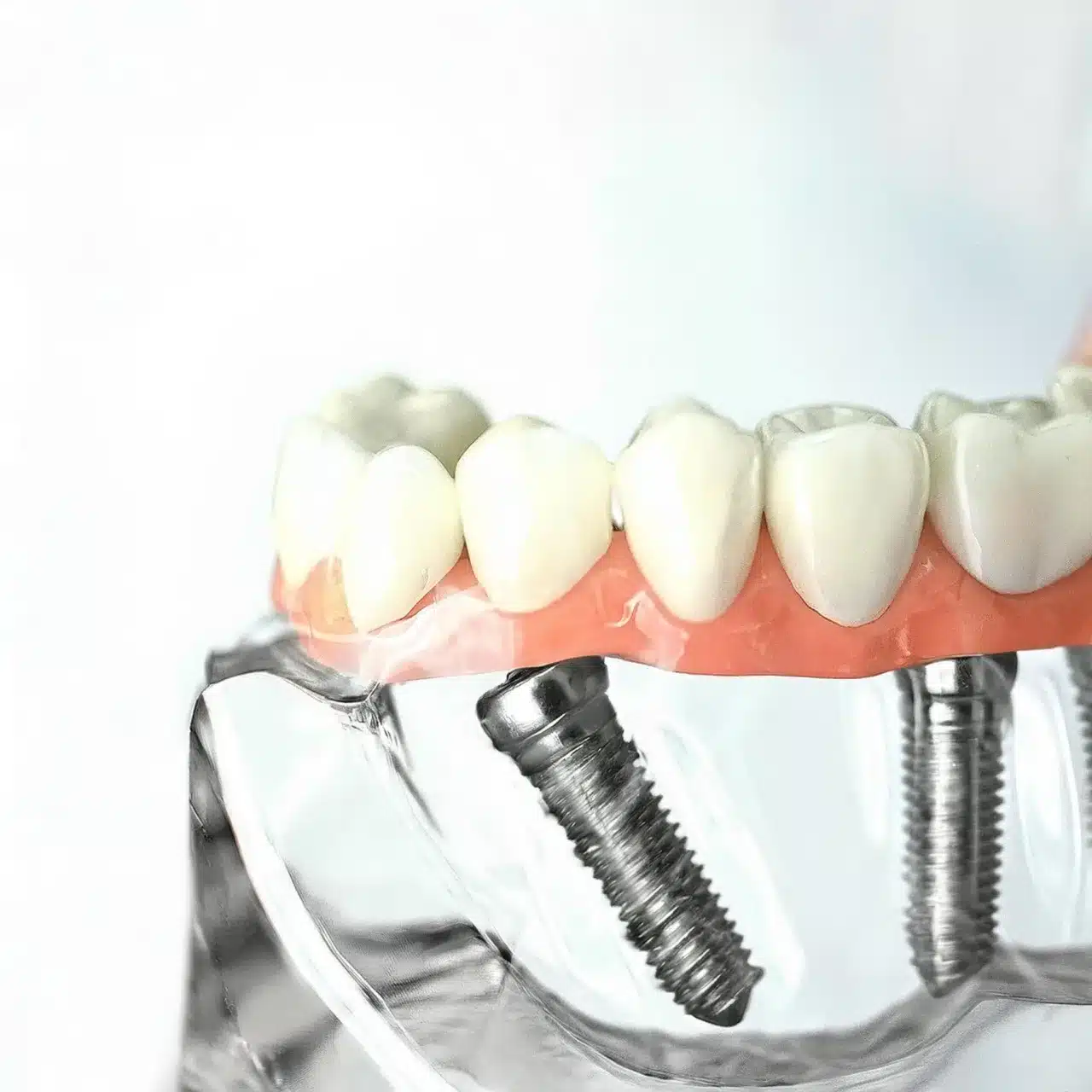
Rreziqet dhe disavantazhet e implanteve dentare
Ndërsa implantet dentare janë një zgjidhje e shkëlqyeshme për dhëmbët që mungojnë, ka edhe disa anë negative që duhen marrë parasysh.
Një shqetësim i rëndësishëm është sëmundja e mishrave të dhëmbëve, e cila mund të çojë në komplikime të tilla si dështimi i implantit.
Kosto e Larte
Implantet dentare janë të shtrenjta, me çmime që variojnë nga 500 € në 2,000 € për implant (6).
Kjo është një barrë e madhe financiare për disa njerëz, veçanërisht nëse duhet të zëvendësojnë disa dhëmbë.
Rreziqet dhe komplikimet e kirurgjisë së implantit dentar
Ashtu si çdo operacion, ka rreziqe dhe komplikime me implantet dentare, të cilat përfshijnë një sërë operacionesh të vogla në mishrat e dhëmbëve dhe nofullën.
Këto mund të përfshijnë gjakderdhje, ënjtje dhe dhimbje, si dhe komplikime më serioze si dëmtimi i nervit ose dështimi i implantit (4).
Në fakt, një studim zbuloi se rreziku i peri-implantitit ishte më i lartë për implantet në nivel kockor, me një prevalencë prej 10-15% (5).
Koha e gjatë e rikuperimit
Koha e rikuperimit për operacionin e implantit dentar mund të jetë e gjatë; disa njerëzve u duhen disa muaj për t'u rikuperuar plotësisht (2).
Ky është një shqetësim i madh për disa njerëz, veçanërisht nëse u duhet të marrin pushim nga puna ose aktivitete të tjera.
| Rrezik/Komplikacion | Prevalenca |
|---|---|
| Peri-implantiti | 20-50% |
| Gjakderdhje dhe ënjtje | E zakonshme |
| Dëmtimi i nervit | E rrallë |
| Dështimi i implantit | E rrallë |
A ia vlejnë implantet dentare?
Implantet dentare janë një investim i madh, me çmime që variojnë nga 500 € në 2,000 € për implant (6).
Një implant dentar shërben si një dhëmb zëvendësues i qëndrueshëm dhe i fortë, duke ofruar një pamje dhe ndjesi natyrale në krahasim me dhëmbët e zakonshëm.
Por për shumë njerëz, përfitimet janë shumë më të mëdha se kostoja.
Megjithatë, përpara se të bëni këtë investim, është e rëndësishme të dini që mund të vendosin implante dentare dhe nëse jeni një kandidat i përshtatshëm për procedurën
Kostoja vs Përfitimet
Kur vendosni nëse implantet dentare ia vlejnë, duhet të peshoni koston dhe përfitimet.
Ndërsa kostoja fillestare e implanteve dentare mund të duket e lartë, ato mund të zgjasin për shumë vite, kështu që ato janë me kosto efektive në planin afatgjatë.
Në fakt, një studim zbuloi se shkalla e mbijetesës së implanteve dentare ishte 95-100% pas 10 vjetësh (5).
Opsione të tjera
Ju gjithashtu duhet të konsideroni opsione të tjera për implantet dentare, të tilla si protezat ose ura.
Një dhëmb i munguar mund të çojë në humbje të mundshme të kockave dhe zhvendosje të dhëmbëve ngjitur, gjë që mund të ndikojë në shëndetin e kockave të nofullës dhe strukturën e fytyrës.
Ndërsa këto opsione mund të jenë më të lira në fillim, ato mund të mos ju japin të njëjtin rehati, komoditet dhe tërheqje estetike si implantet dentare.
Në fakt, një studim zbuloi se 90% e pacientëve të implanteve dentare ishin të kënaqur me implantet e tyre, krahasuar me 50% të pacientëve me proteza (6).
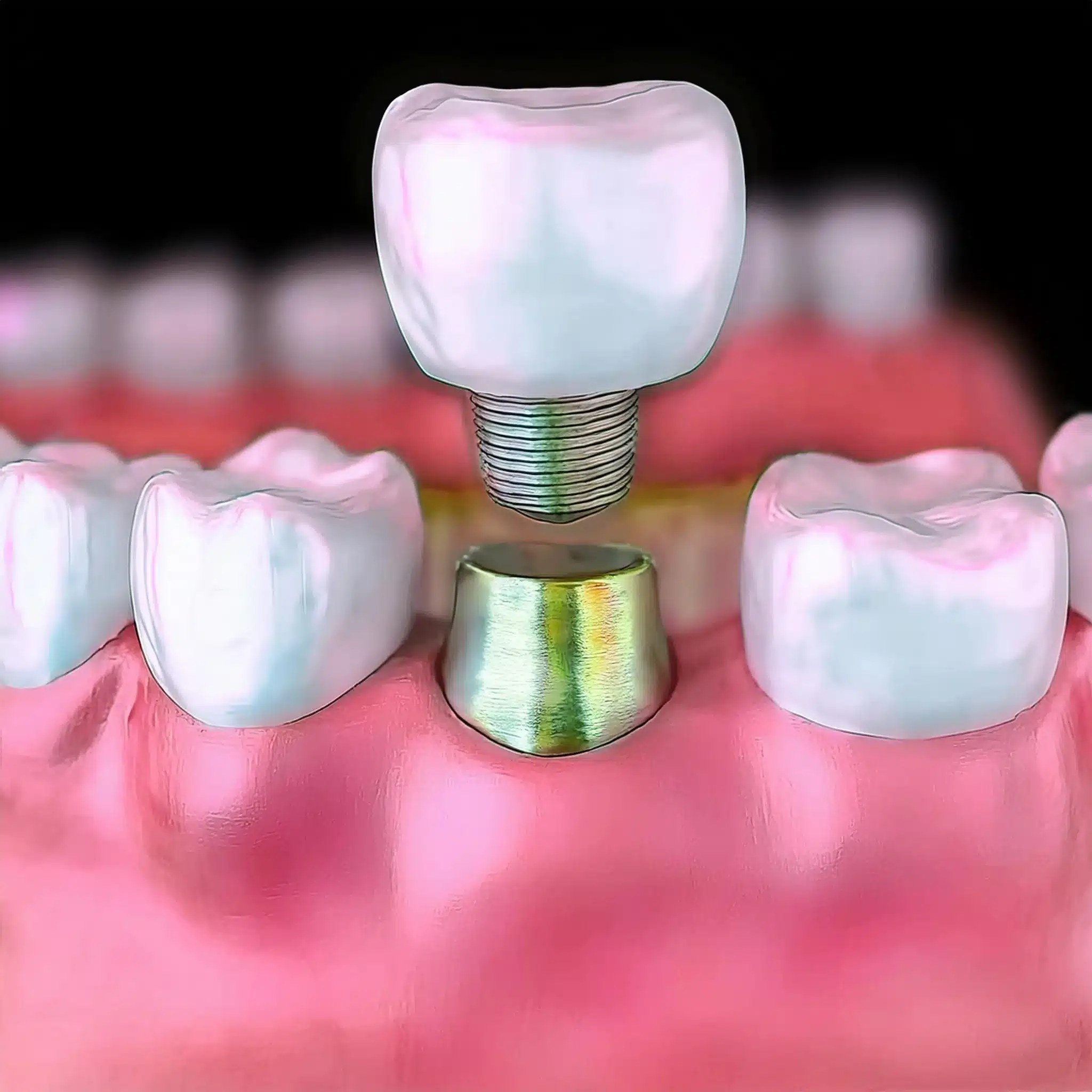
Mendimet Përfundimtare
Në fund të fundit, gjithçka varet nga rrethanat dhe përparësitë individuale.
Duke peshuar koston dhe përfitimet, duke marrë parasysh opsionet e tjera dhe duke marrë një vendim të informuar, ju mund të vendosni nëse implantet dentare janë për ju.
Përfundim & Çështje kryesore
Pikat kryesore:
Implantet dentare janë një zgjidhje afatgjatë për dhëmbët që mungojnë, me një shkallë mbijetese 95.5% pas 10 vjetësh (1).
Mukoziti peri-implantar është një gjendje e zakonshme që mund të ndodhë rreth implanteve dentare, me një prevalencë prej 20-50% të pacientëve me implant dentar (4).
Implante në nivel të indeve të buta kanë një shkallë më të lartë të mbijetesës se implantet në nivel kockor, me një normë mbijetese 5-10% më të lartë (5).
Kontrolle të rregullta dentare janë thelbësore për ruajtjen e shëndetit dhe jetëgjatësisë së implanteve dentare, të ngjashme me dhëmbët natyralë.
konkluzioni:
Implantet dentare mund të jenë një zgjidhje e madhe për dhëmbët që mungojnë, por së pari duhet të peshoni të mirat dhe të këqijat.
Duke lexuar pikat kryesore, FAQ dhe duke kuptuar rreziqet dhe përfitimet, ju mund të merrni një vendim të informuar nëse implantet dentare janë për ju.
FAQ
Referencat
Esposito M, Ardebili Y, Worthington HV. Ndërhyrjet për zëvendësimin e dhëmbëve që mungojnë: lloje të ndryshme të implanteve dentare. Cochrane Database Syst Rev. 2014;(7):CD003815.
Neni: Ndërhyrjet për zëvendësimin e dhëmbëve që mungojnë: lloje të ndryshme të implanteve dentare
French D, Larjava H, Ofec R. Studim retrospektiv i kohortës së 4591 implanteve Straumann në një klinikë private me ndjekje deri në 10-vjeçare. Pjesa 1: Analiza shumëvariabël e mbijetesës. Clin Oral Implants Res. 2015;26(11):1345-1354.
Gotfredsen K. Një studim prospektiv 10-vjeçar i implanteve me një dhëmb të vendosur në maksilën anteriore. Clin Implant Dent Relat Res. 2012;14(1):80-87.
Neni: Një studim prospektiv 10-vjeçar i implanteve të një dhëmbi të vendosur në maksillën e përparme
Heitz-Mayfield LJ, Salvi GE. Mukoziti periimplantar. J Periodontol. 2018;89(Shtojca 1):S257-S266.
Neni: Mukoziti peri-implantar
Lago L, da Silva L, Fernández-Formoso N, Rilo B. Vlerësimi sistematik i nivelit të indeve të buta dhe nivelit të kockave implantet dentare. J Clin Exp Dent. 2023; 15 (9): e945-e953.
Neni: Vlerësimi sistematik i nivelit të indeve të buta dhe nivelit kockor të implantit dentar
FDA. Implantet dentare: Çfarë duhet të dini. FDA; 2021.

